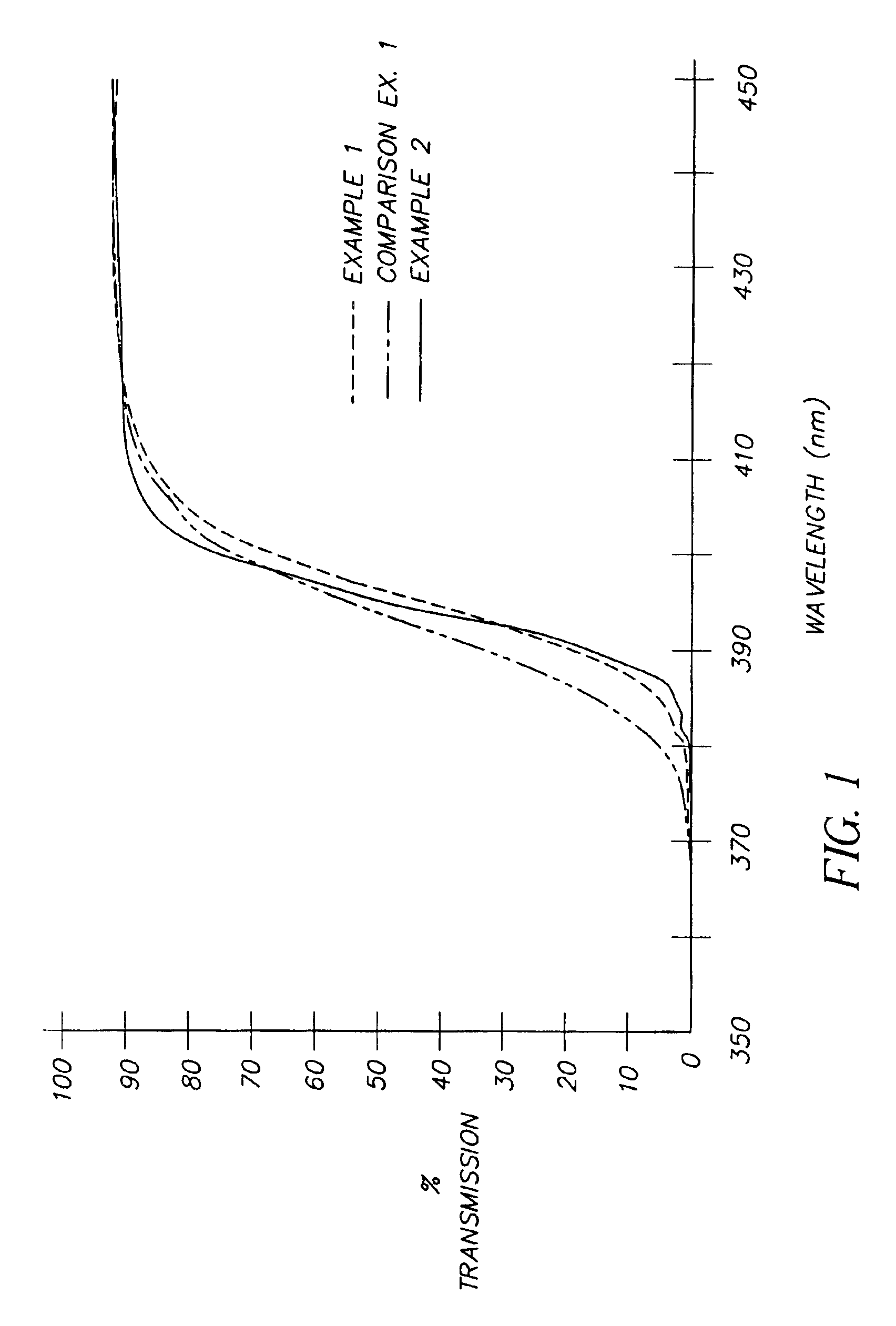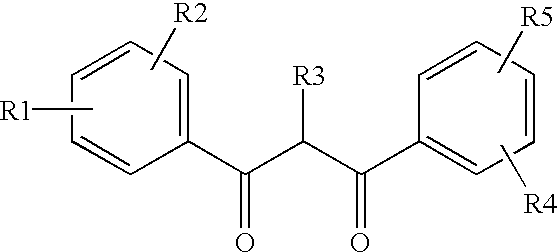Ultraviolet light filter element
a filter element and ultraviolet light technology, applied in the field of ultraviolet light filter elements, can solve the problems of thermal instability of aminebutadiene compounds, and the use of various compounds as suggested in the prior art may not provide as sharp a cut-off of absorption between ultraviolet and visible spectrum, so as to hinder amine light stabilizers and enhance durability.
- Summary
- Abstract
- Description
- Claims
- Application Information
AI Technical Summary
Benefits of technology
Problems solved by technology
Method used
Image
Examples
example 1
In a mixing vessel for a polymer dope, 100 weight parts of cellulose acetate (CTA) (combined acetic acid value: 60.8%), 11.8 weight parts of triphenyl phosphate (TPP), 399 weight parts of dichloromethane and 33.4 weight parts of methanol and 9.3 weight parts of n-butanol were placed, and the cellulose acetate was dissolved by stirring under heating to prepare a dope.
In another mixing vessel, 3.3 weight parts of an ultraviolet absorber (compound of formula UV-1), 27.3 weight parts UV-2, 5.2 weight parts UV-3, 145 weight parts of dichloromethane, 12 weight parts of methanol, and 3.4 weight parts of n-butanol were placed, and the UV absorbers were dissolved by stirring to prepare a solution.
To the CTA dope (302 weight parts), 10 weight parts of the ultraviolet absorber containing solution was added, and they were sufficiently mixed to prepare a uniform solution (dope). The mixed dope was fed to an extrusion die and cast on a moving metal support. After the cast film was separated from ...
example 2
In another mixing vessel, 10.3 weight parts of an ultraviolet absorber (UV-1), 4.6 weight parts UV-4, 5.1 weight parts of HALS-2, having the following structures, 145 weight parts of dichloromethane, 12 weight parts of methanol, and 3.4 weight parts of n-butanol were placed, and the UV absorbers were dissolved by stirring to prepare a solution. The same procedure as in Example 1 for mixing with CTA dope was then used and a CTA film was prepared in the same manner.
The transmittance spectra of each of the films from Examples 1 and 2 and Comparison Example 1 are shown in FIG. 1. The transmittance curves for Examples 1 and 2 rise steeply in the vicinity of 395 nm and demonstrate transmittance of less than 1% at 380 nm, less than 20% at 390 nm, and greater than 90% at 420 nm. In contrast, the spectrum of Comparison Example 1 shows a more shallow rise with a transmittance of greater than 4% at 380 nm, greater than 30% at 390 nm, while maintaining greater than 90% at 420 nm. The performan...
PUM
| Property | Measurement | Unit |
|---|---|---|
| transmittance | aaaaa | aaaaa |
| wavelength | aaaaa | aaaaa |
| transmittance | aaaaa | aaaaa |
Abstract
Description
Claims
Application Information
 Login to View More
Login to View More - R&D
- Intellectual Property
- Life Sciences
- Materials
- Tech Scout
- Unparalleled Data Quality
- Higher Quality Content
- 60% Fewer Hallucinations
Browse by: Latest US Patents, China's latest patents, Technical Efficacy Thesaurus, Application Domain, Technology Topic, Popular Technical Reports.
© 2025 PatSnap. All rights reserved.Legal|Privacy policy|Modern Slavery Act Transparency Statement|Sitemap|About US| Contact US: help@patsnap.com



